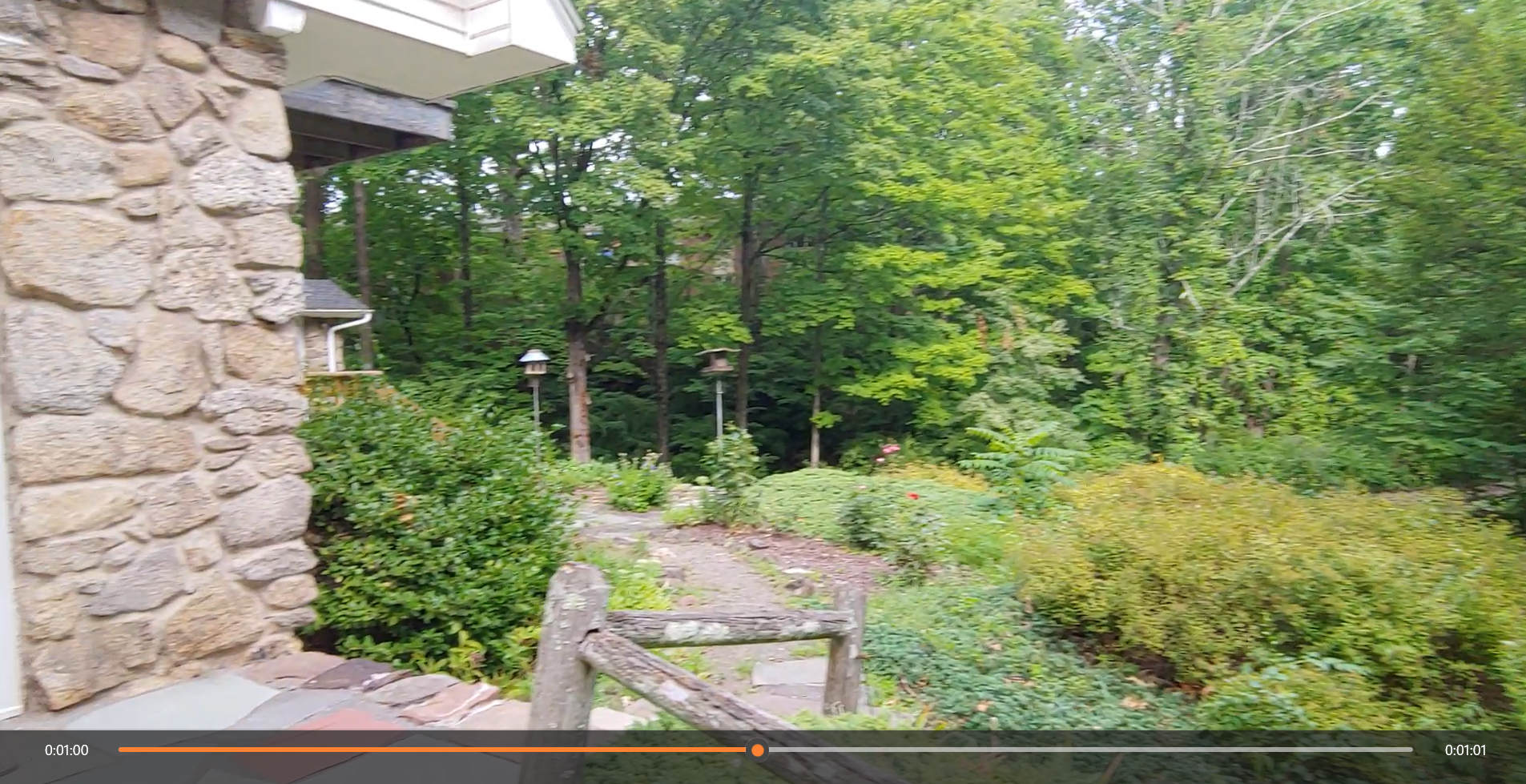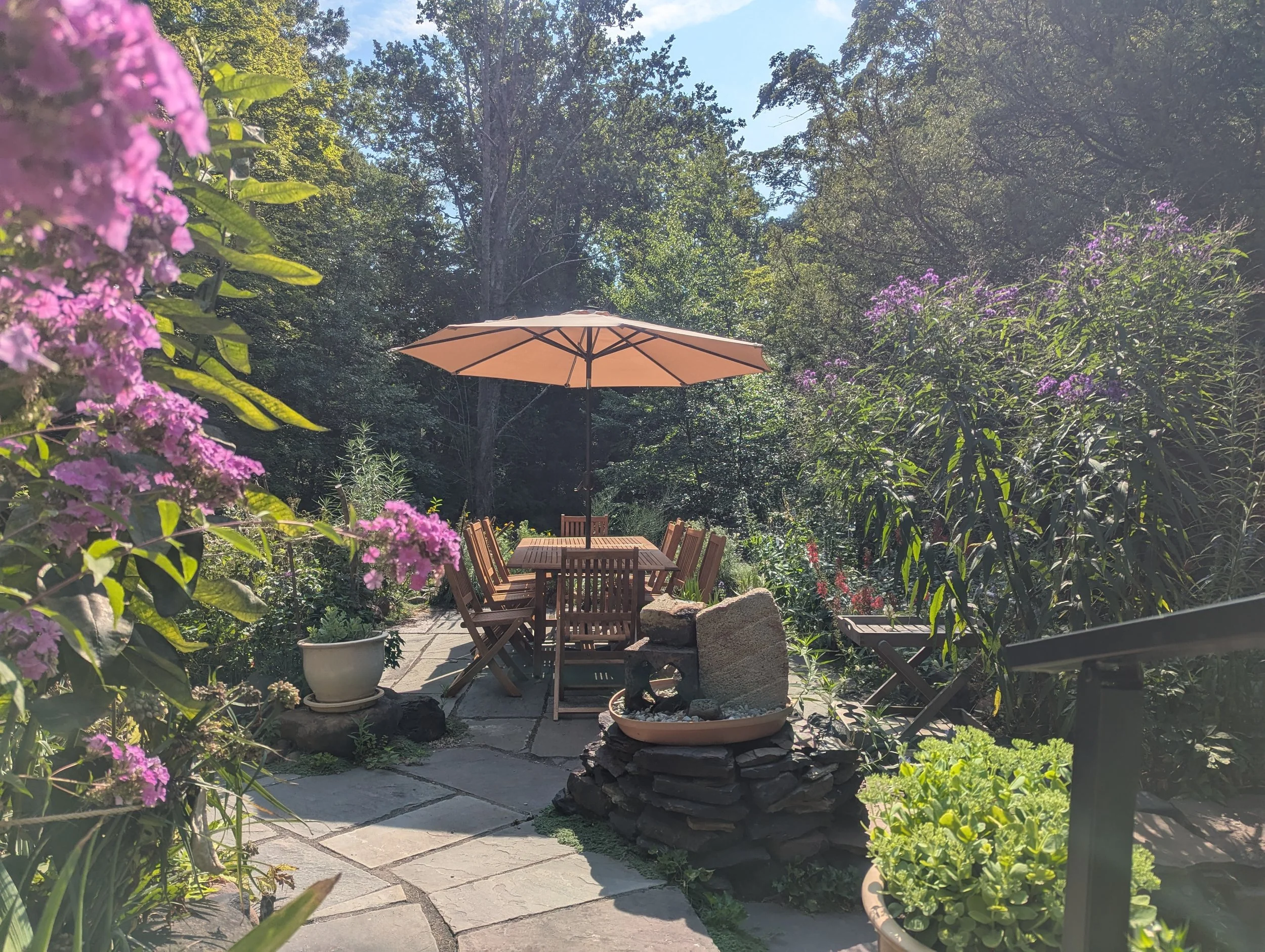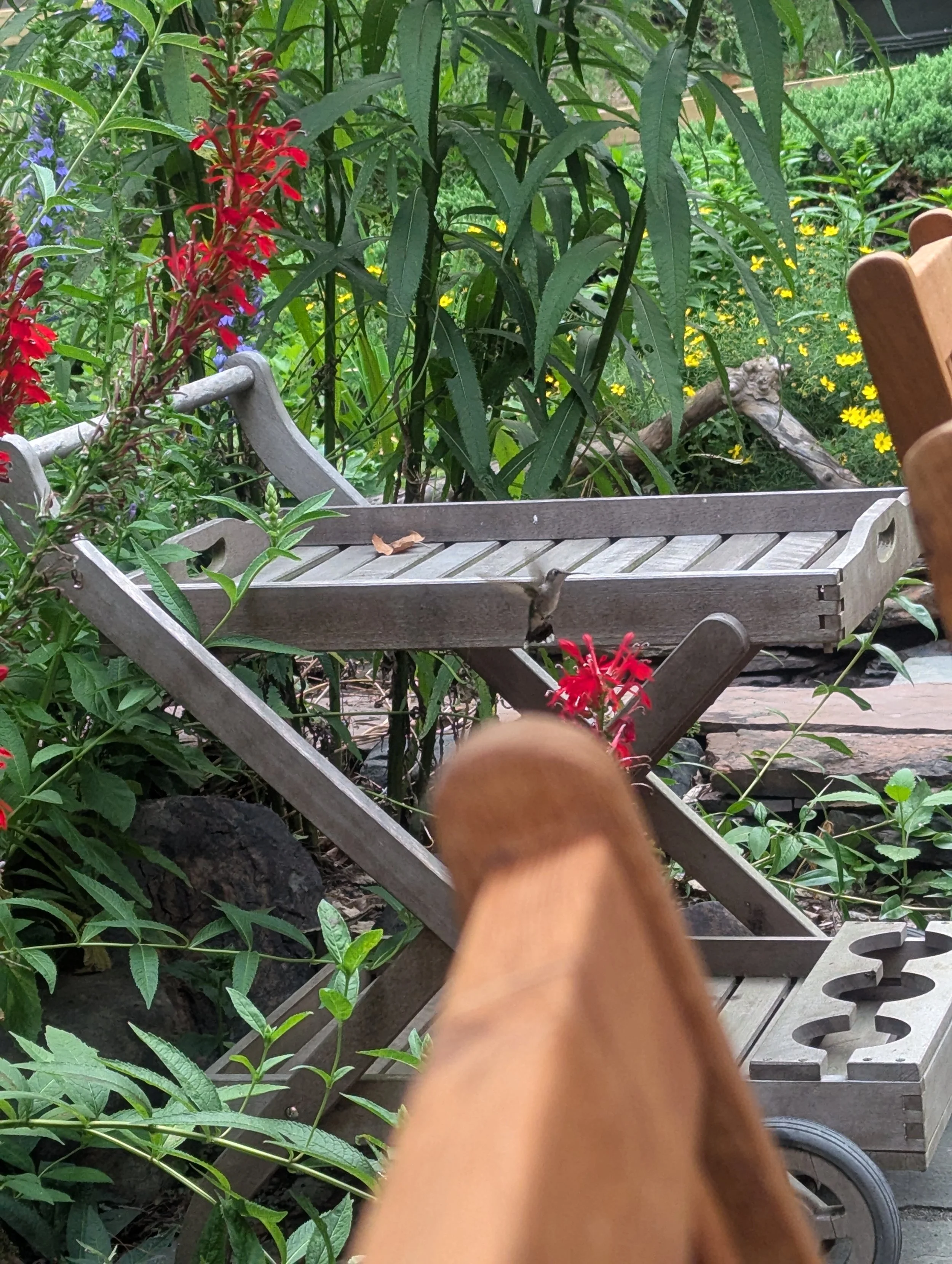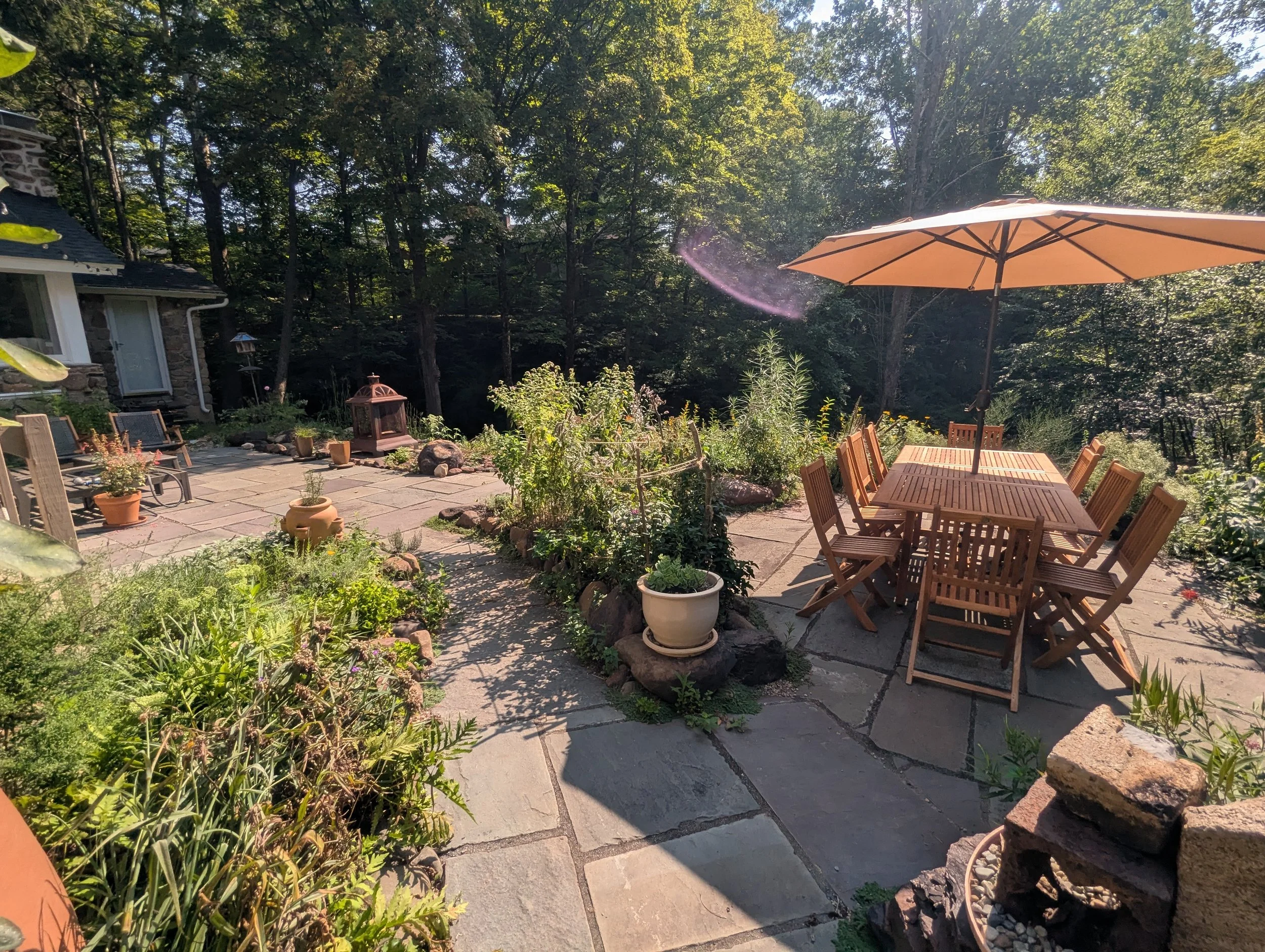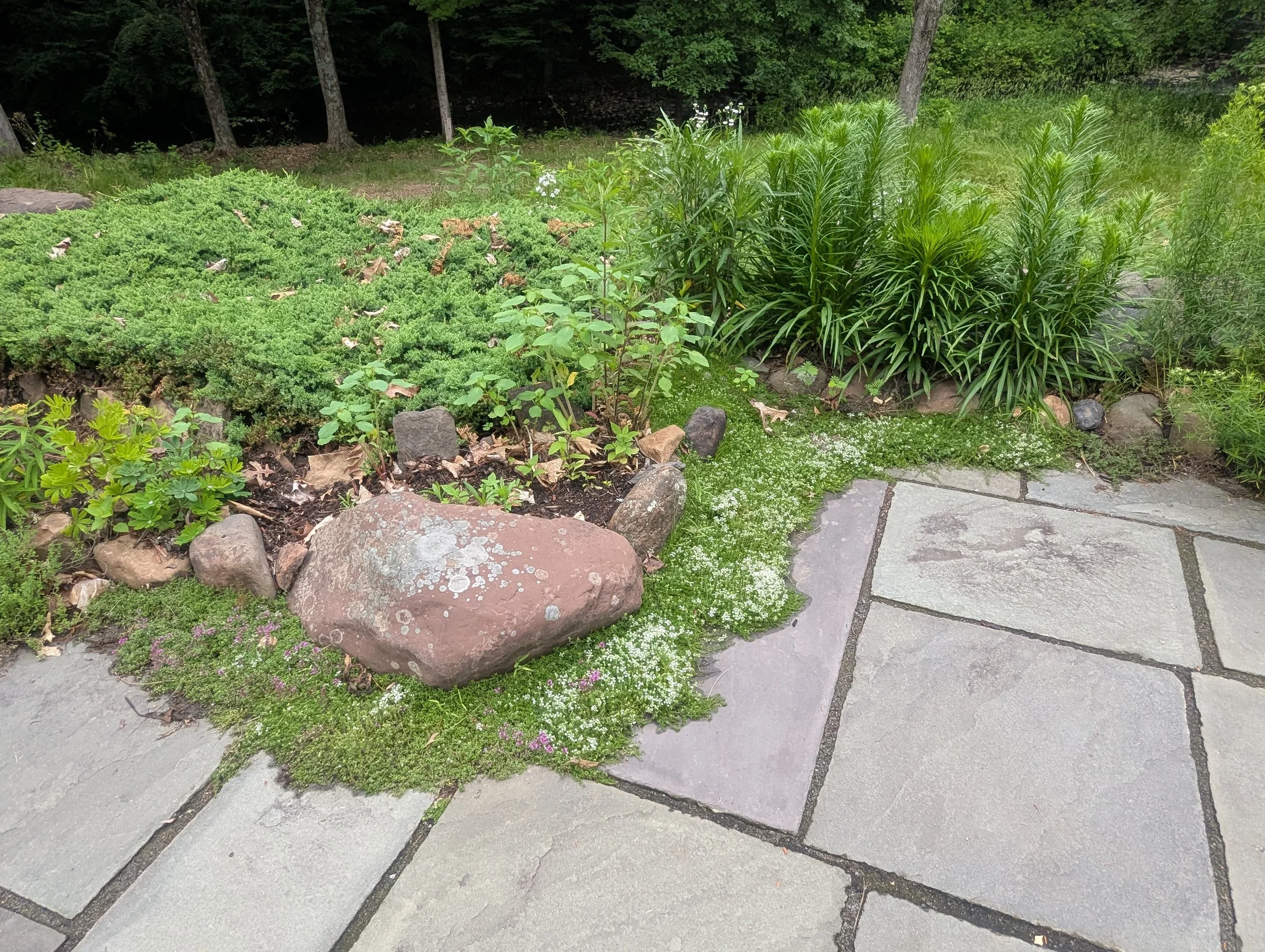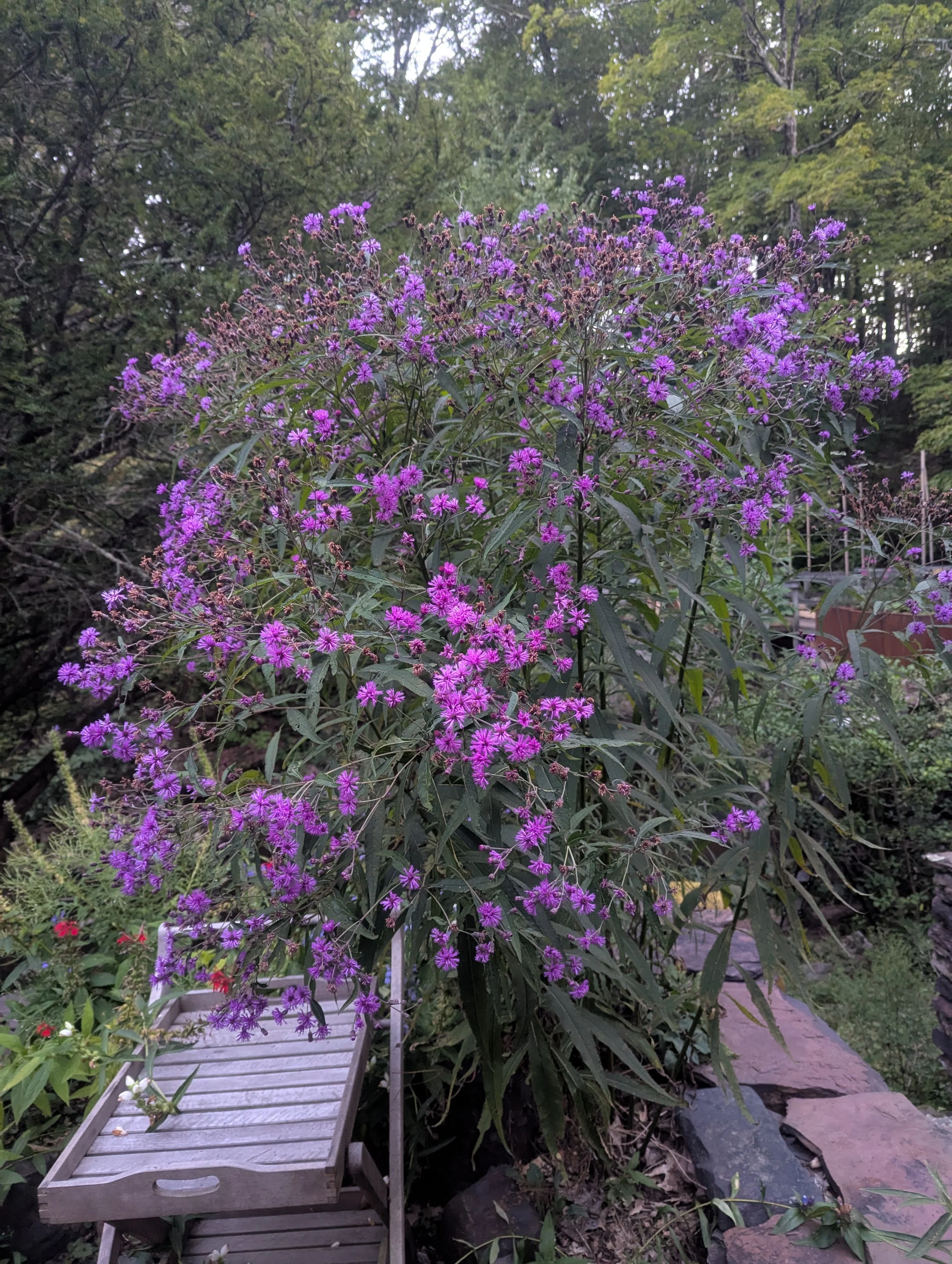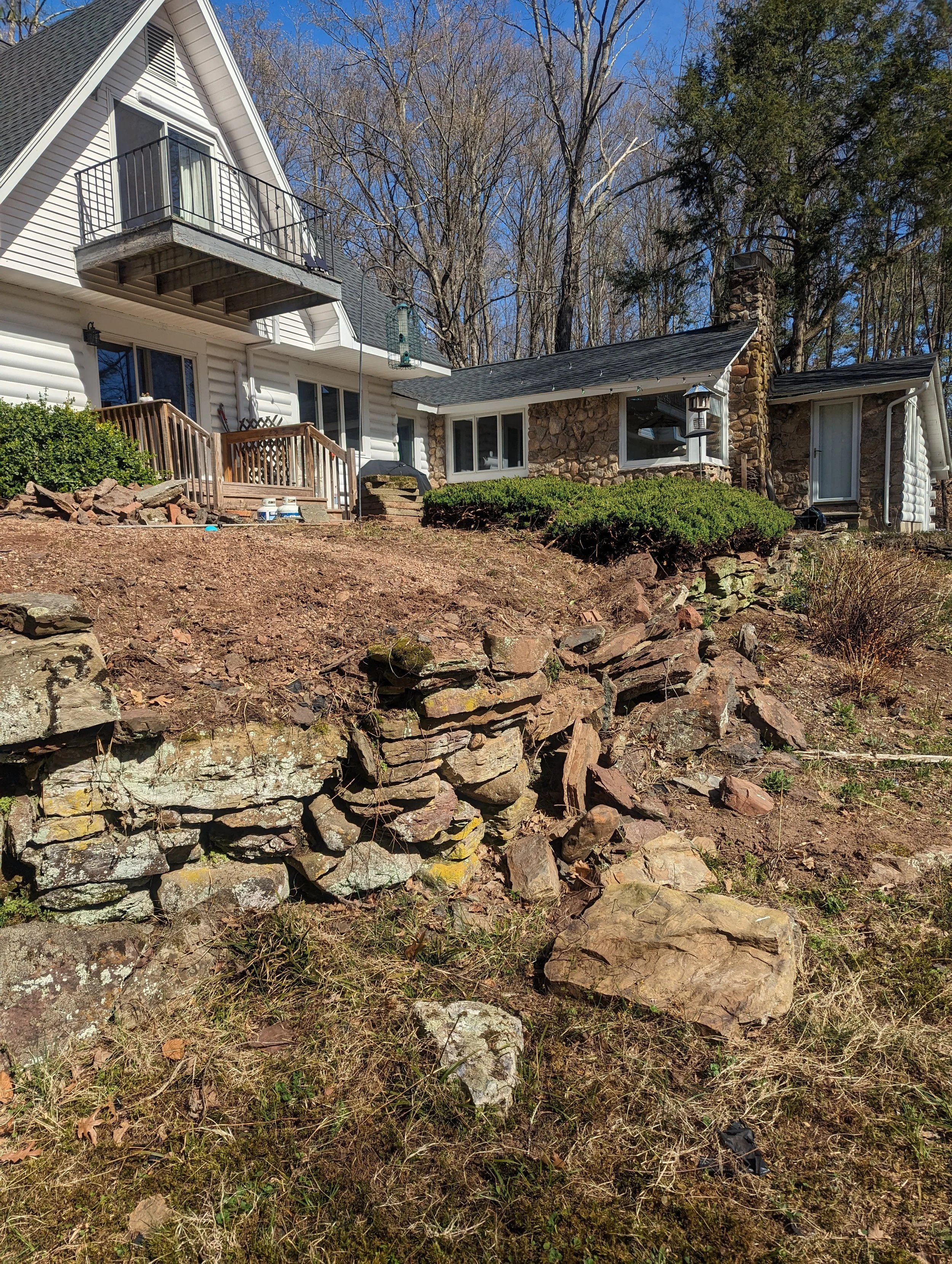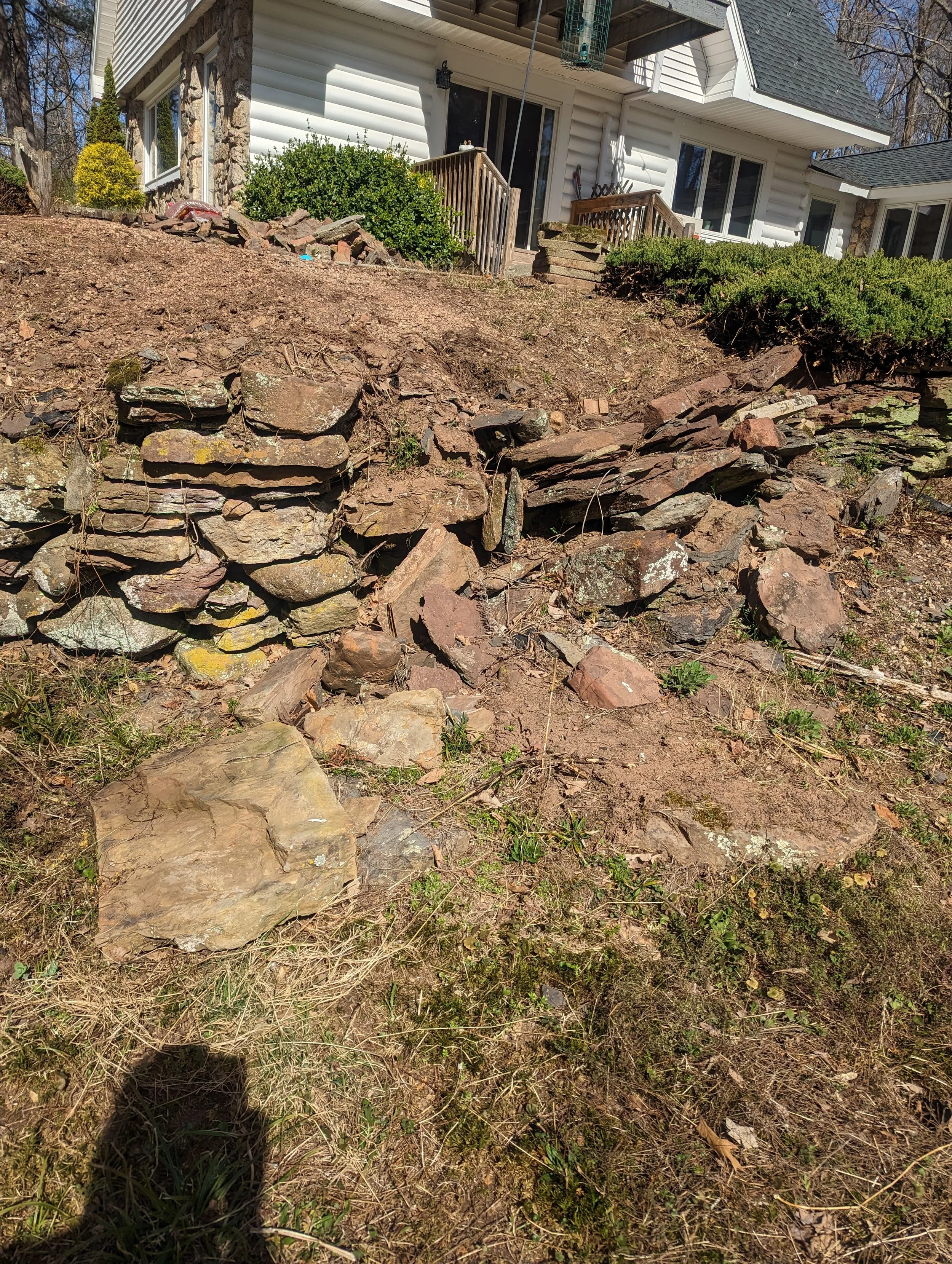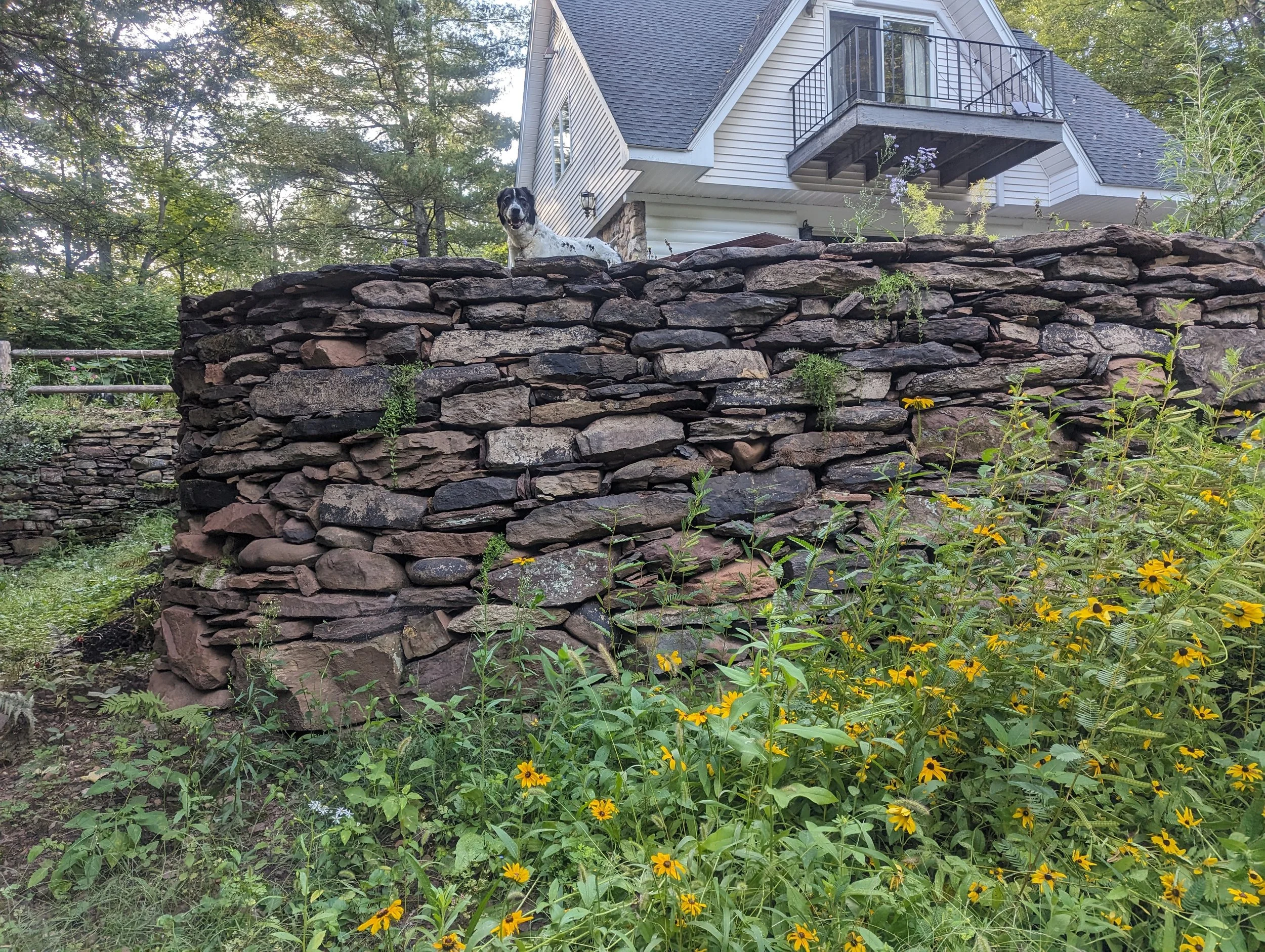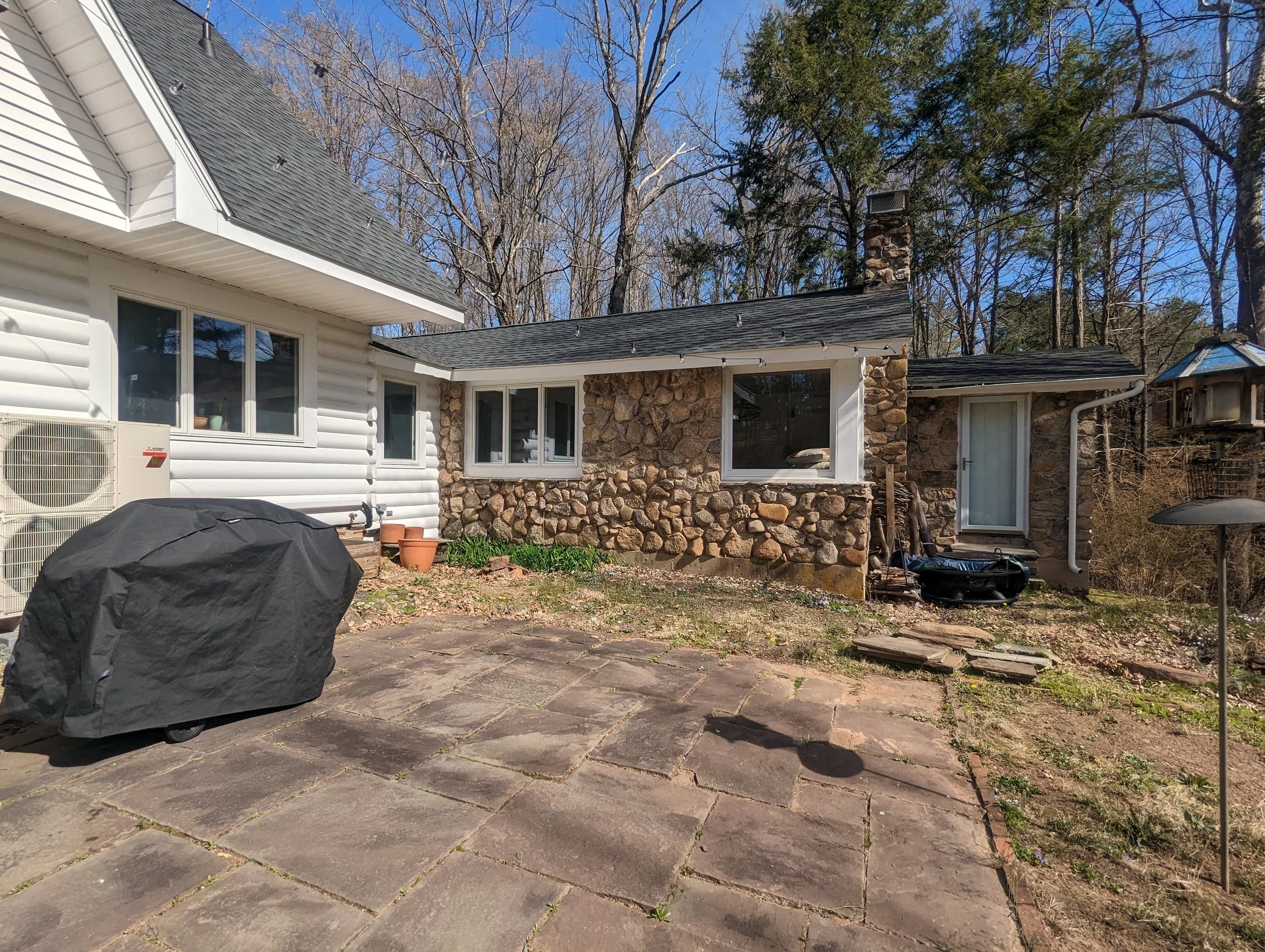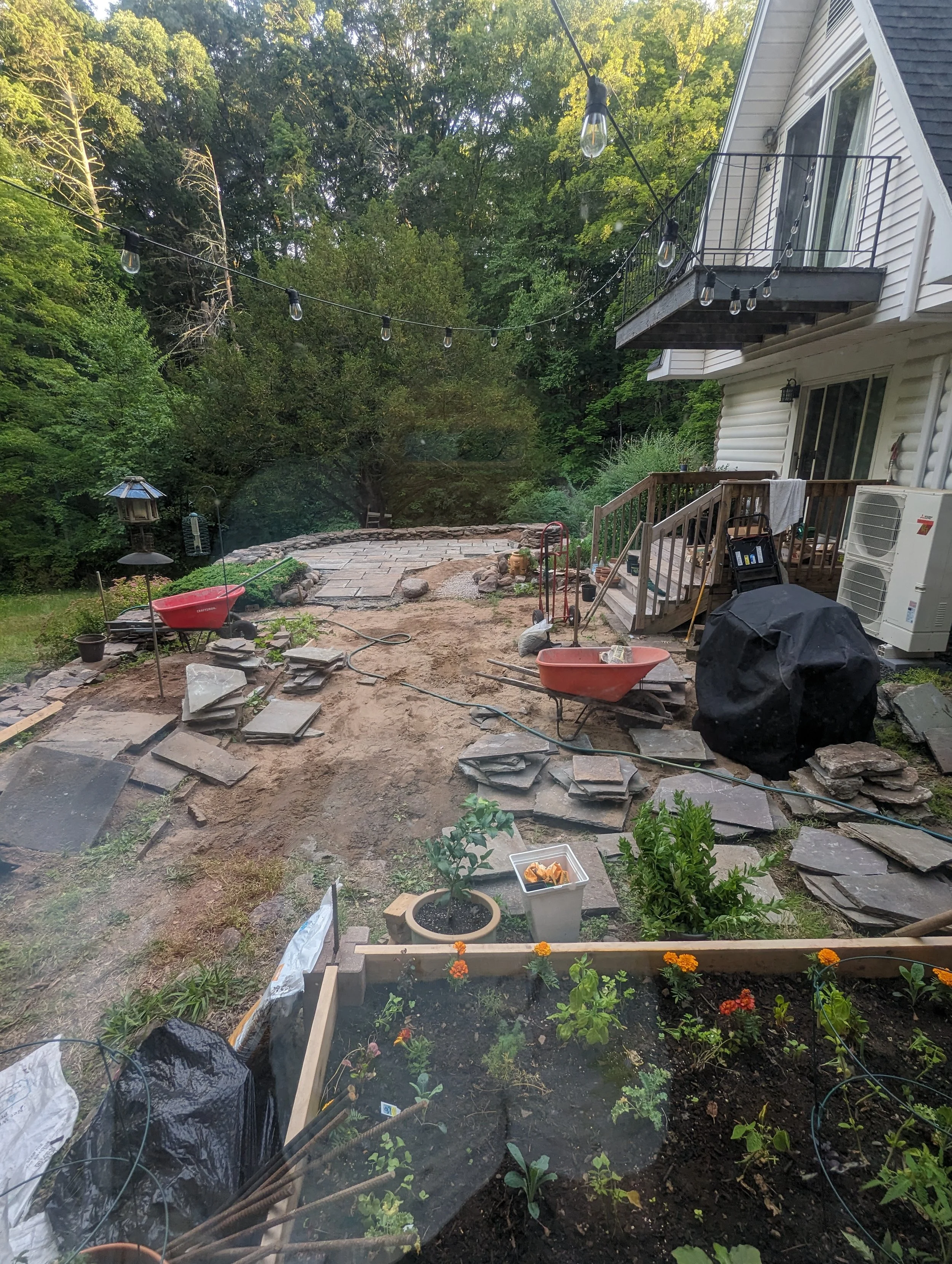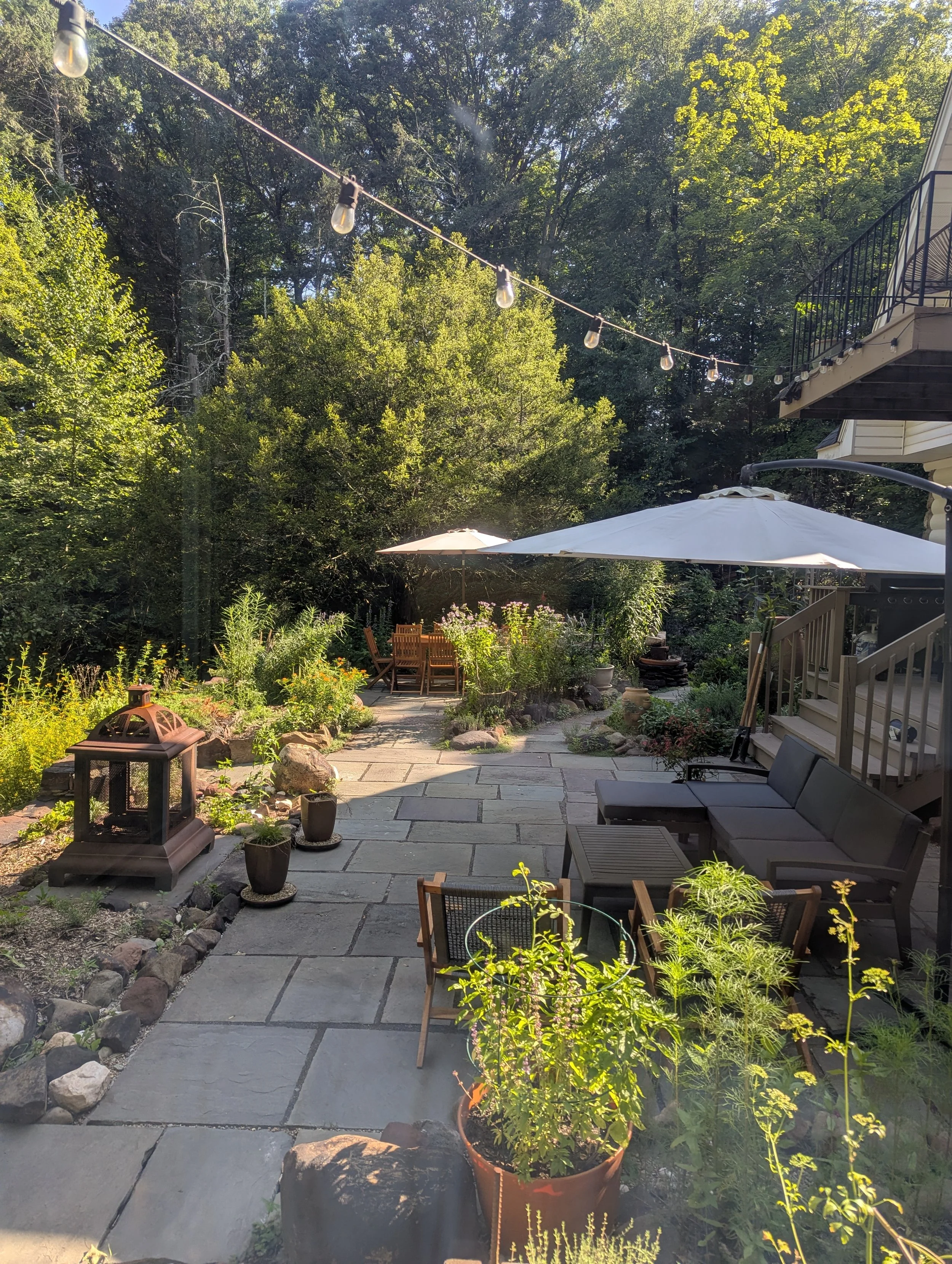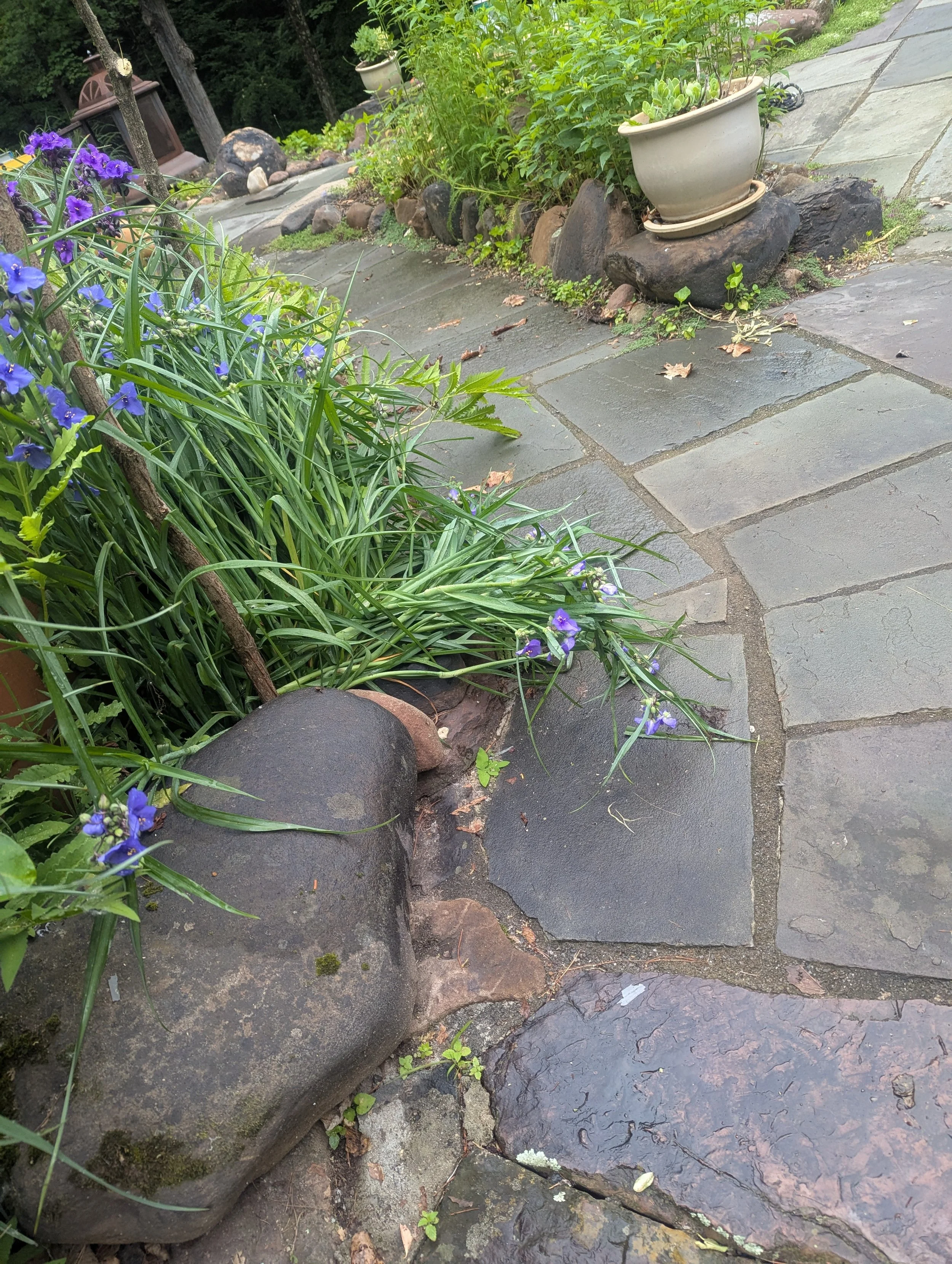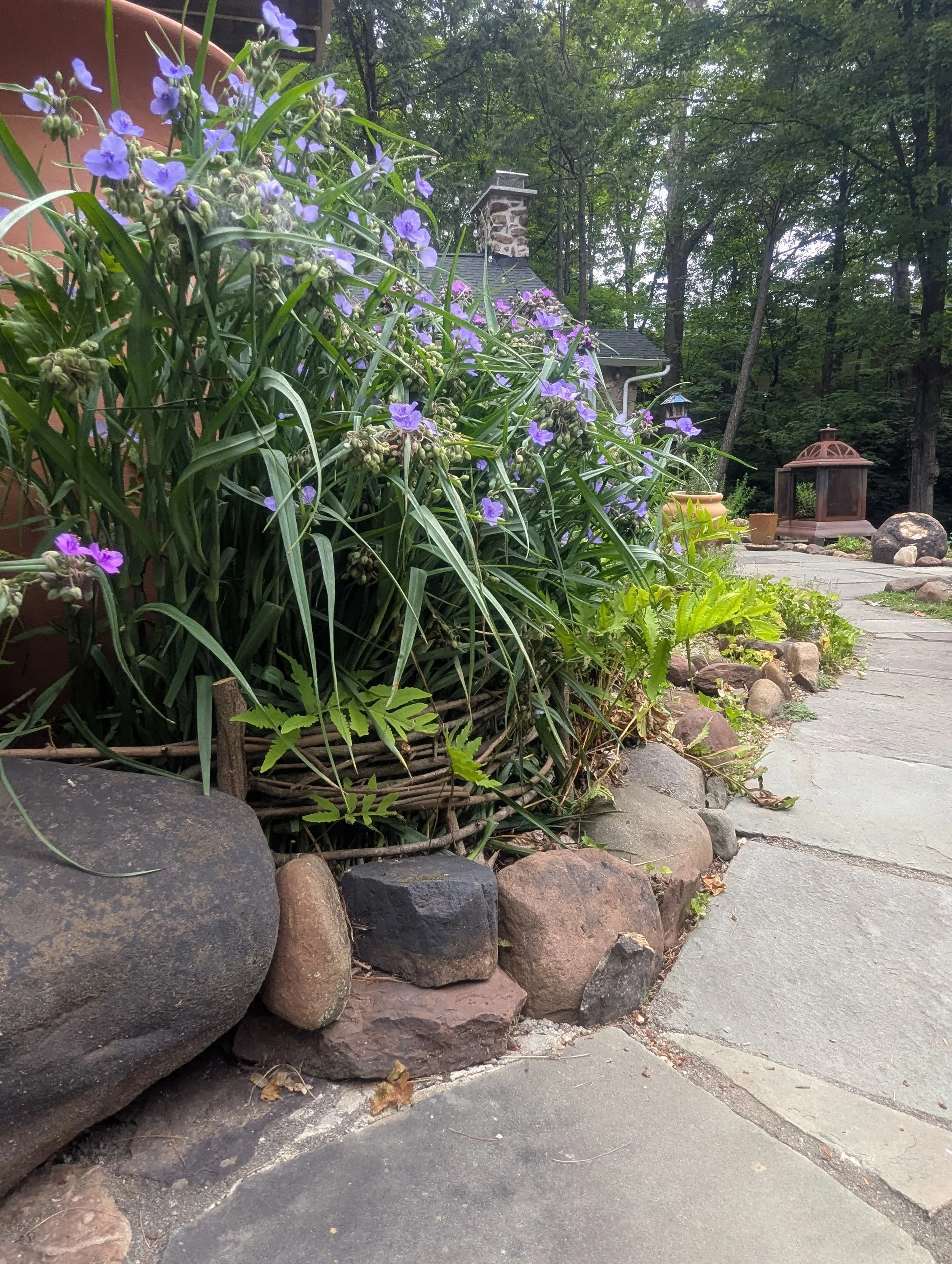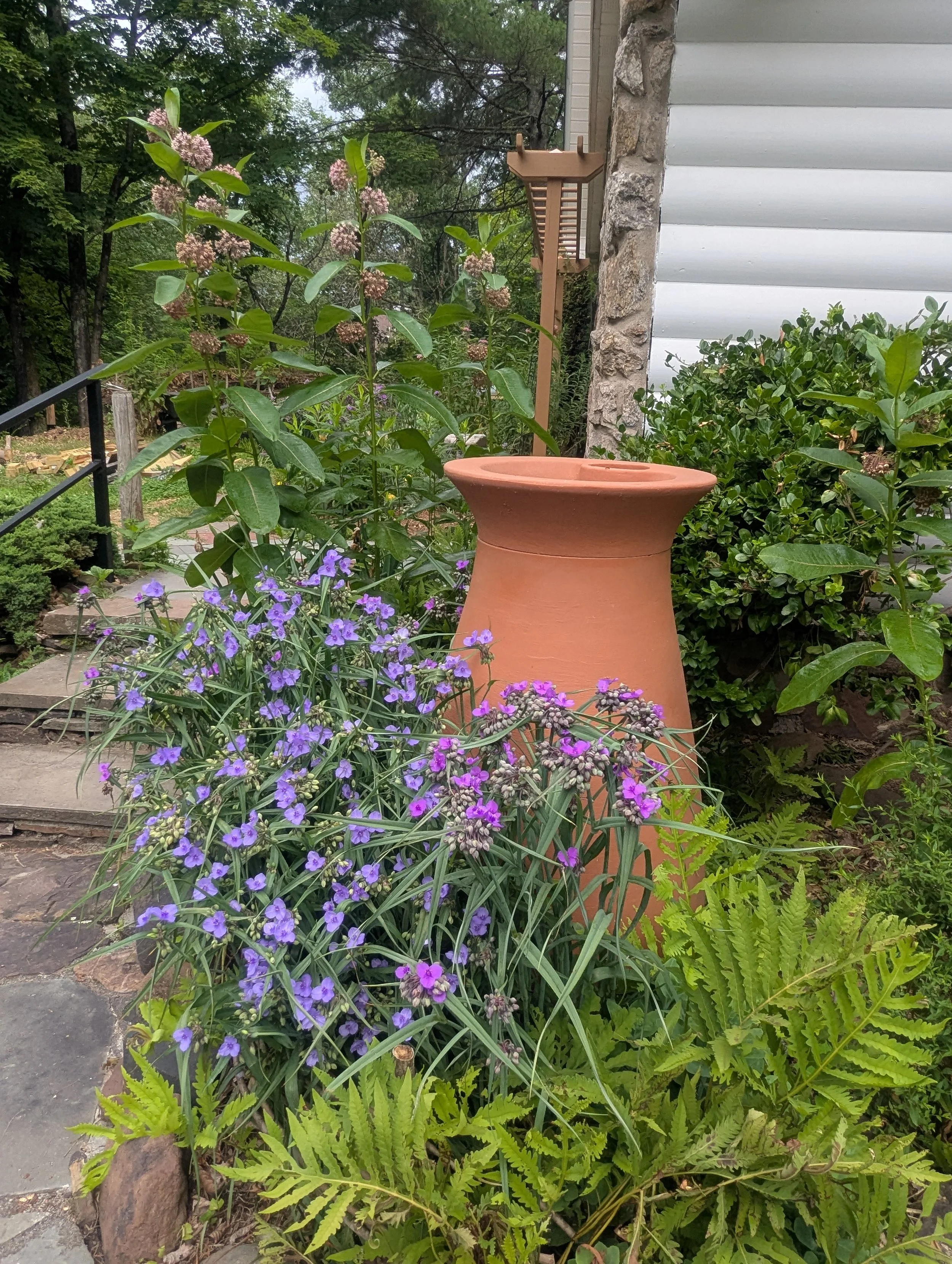Patios, Walls, and Gardens- oh my
This was the first exterior landscape and hardscape project I tackled at The Island. A small bluestone patio existed behind the house but the rest of the space was collapsed and crumbling retaining walls with a pile of construction debris that had been covered in dirt and non-native plant overgrowth. I watched the space for 2 years to see how it was used by wildlife here before me before designing it. The placement of patios vs garden beds were determined based on where the snapping turtles and mallards had nesting sites in that area. They still use the beds each spring to nest and some have been expanded to accommodate them. The space was reimagined to include a second portion of the patio for dining that would overlook the waterfall. I wanted the patios to feel like you were in a secret garden, tucked away in a little enchanted space and encompassed by nature. My father designed and led the wall and hardscape rebuilds- designed to handle drainage issues correctly- reusing all of the original collapsed stones and more found on the property. The patios were built from second-hand bluestone and stones from our famous CT soil to create borders. Beds were planted with groupings of native plants, nearly all CT native species, selected for the site of each bed. This means as these beds approach maturity, we have almost never had to water. The colors and shapes around the patio change with the seasons and are planted for 4 season interest. Watching the hundreds of pollinators- bumbles, butterflies, hummingbirds- flitter around these plants while listening to the birds singing is truly what makes this space feel magical.
Before View
Before View
After
After
After view from lower patio. I designed the patio to feel like you were in a secret garden, using native species to help create the magical feeling of being hidden. From the second entrance in full sun and drier spots, Asclepias Tuberosa and Monarda Fistulosa bloom in mid summer. This same bed blooms with native lupine in the spring.
After view of the waterfall from the dining patio
One of my goals when planting is native biodiversity. The beds surrounding the patio spaces showcase a wide variety of native species planted for the site of each bed. For example, this back line of the patio is partly shaded and stays more damp since the slope directs water to drain in that direction. It is home to Cardinal Flower, Great Blue Lobelia, Turtlehead, Red Columbine, and Violets.
Turtlehead blooming over the water
Cardinal Flower surrounding back of patio in July
A Ruby-Throated Hummingbird dines on cardinal flowers while we enjoy dinner
One of the non-native plants I did use on the patio were a variety of creeping thymes- Elfin Thyme being my favorite. They create a super tight ground cover in the large gaps where stones meet patio surface and are hugely helpful in suppressing weeds. They lend a wonderfully aged, mythical feel to the space.
Second pathway bed leading to dining patio is home to native lupine giving late spring blooms. These are second year plants- I'm eager to see how they do in their third year.
I use New York Ironweed on the corner as a tall accent to complete the feeling of being hidden. I particularly like Ironweed as a substitute for Butterfly Bushes which are invasive and non-native.
Before- Stairs down patio to below wall
Before- Right side garden bed of stairs
After- New stone stairs down to below wall
After- right side stairs bed
Before- massive stone retaining walls had collapsed
Before- collapsed walls
Before
After- Stone Walls Rebuilt to allow for a patio on top of them
After rebuild
Before- original stone patio was this small section that had become too sunken in places and had no plants minus some daylillies in corner
After- relaying patio and installing garden box, rain barrels, and creating screens with native clematis around hvac unit
Before- view of patio from inside
After- view of patio from inside
Before- Walkway with spiderwort flopping
After- walkway with wattle fence installed
Wattle fence holding rain barrel, spiderwort, common milkweed, sensitive ferns

